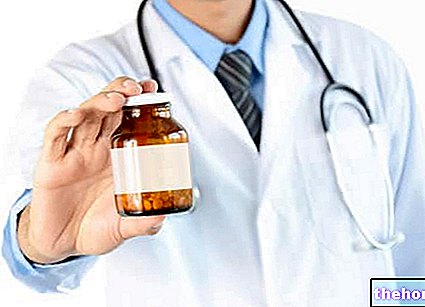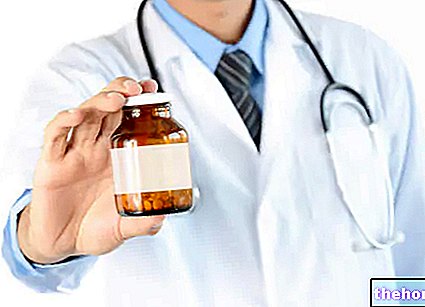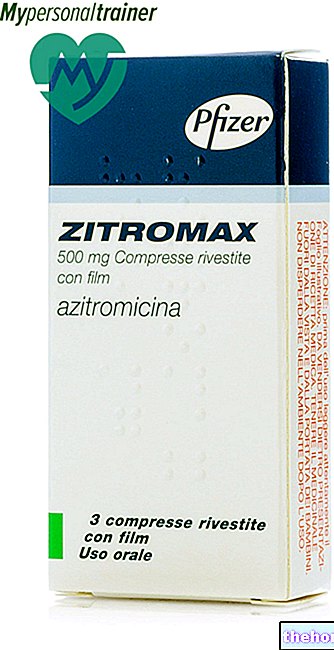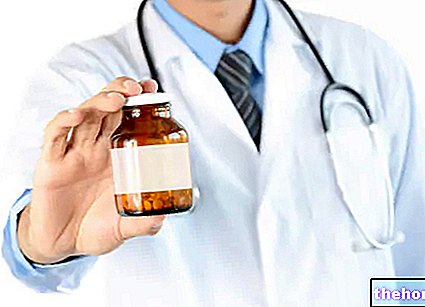Active ingredients: Rupatadine
Rupafin 10 mg tablets
Indications Why is Rupafin used? What is it for?
Rupatadine is an antihistamine.
Rupafin relieves the symptoms of allergic rhinitis such as sneezing, runny nose, itchy eyes and nose.
Rupafin is also used to relieve symptoms associated with chronic idiopathic urticaria (an allergic skin rash) such as itching and wheals (localized redness and swelling of the skin).
Contraindications When Rupafin should not be used
Do not take Rupafin
- if you are allergic to rupatadine or any of the other ingredients of this medicine
Precautions for use What you need to know before taking Rupafin
Talk to your doctor or pharmacist before taking Rupafin.
In case of renal or hepatic insufficiency, consult your doctor. The use of Rupafin 10 mg tablets is currently not recommended in patients with renal or hepatic impairment.
If you have low levels of potassium in your blood and / or have an abnormal heartbeat pattern (known prolongation of the QTc interval on the ECG) which can occur in some forms of heart disease, ask your doctor for advice.
If you are over 65, consult your doctor or pharmacist.
Children
This medicine is not indicated for children under 12 years of age.
Interactions Which drugs or foods can modify the effect of Rupafin
Tell your doctor or pharmacist if you are taking, have recently taken or might take any other medicines.
Do not take medicines containing ketoconazole or erythromycin if you are using Rupafin.
If you are taking central nervous system antidepressant medicines or statin medicines, talk to your doctor before taking Rupafin.
Rupafin with food, drink and alcohol
Rupafin should not be taken with grapefruit juice, as this drink can increase the level of Rupafin in the body.
Rupafin, at the recommended dose (10 mg), does not increase the drowsiness produced by alcohol.
Warnings It is important to know that:
Pregnancy and breastfeeding
If you are pregnant or breast-feeding, think you may be pregnant or are planning to have a baby, ask your doctor or pharmacist for advice before taking this medicine.
Driving and using machines
At the recommended dosage, there are no known effects of Rupafin on the ability to drive or use machines. However, when starting treatment with Rupafin, you should use caution and monitor how the treatment affects you before driving or using machines.
Rupafin contains lactose.
If you have been told by your doctor that you have "intolerance to some sugars, contact your doctor before taking this medicinal product.
Dose, Method and Time of Administration How to use Rupafin: Posology
Always take this medicine exactly as your doctor has told you. If in doubt, consult your doctor or pharmacist.
Rupafin is indicated for adolescents (over 12 years of age) and for adults. The usual dose is one tablet (10 mg of rupatadine) once a day on a full or empty stomach. Swallow the tablet with a sufficient amount of liquid (eg a glass of water).
The duration of treatment with Rupafin will be indicated by the attending physician.
Overdose What to do if you have taken too much Rupafin
If you take more Rupafin than you should
Contact your doctor or pharmacist immediately if you have accidentally taken an overdose of the medicine.
If you forget to take Rupafin
Take the dose as soon as possible and continue with the usual dosage. Do not take a double dose to make up for forgotten individual doses
Side Effects What are the side effects of Rupafin
Like all medicines, this medicine can cause side effects, although not everybody gets them.
Common side effects (may affect up to 1 in 10 people) are sleepiness, headache, dizziness, dry mouth, feeling weak and tired.
Uncommon side effects (may affect up to 1 in 100 people) are increased appetite, irritability, attention disturbance, nasal bleeding, nasal dryness, pharyngitis, cough, dry throat, rhinitis, nausea, abdominal pain, diarrhea, indigestion , vomiting, constipation, rash, back pain, joint pain, muscle aches, thirst, general feeling of discomfort, fever, abnormal liver function tests and weight gain.
Rare side effects (may affect up to 1 in 1000 people) are palpitations, increased heart rate and allergic reactions (itching, wheals and swelling of the face, lips, tongue or mouth).
Reporting of side effects
If you get any side effects, talk to your doctor or pharmacist. This includes any possible side effects not listed in this leaflet. You can also report side effects directly via the national reporting system at https://www.aifa.gov.it/content/segnalazioni-reazioni-avverse By reporting side effects you can help provide more information on safety of this medicine.
Expiry and Retention
Keep this medicine out of the sight and reach of children.
Do not use this medicine after the expiry date which is stated on the carton and blister. The expiry date refers to the last day of that month.
Keep the blister in the outer carton to protect the medicine from light.
Do not throw any medicines via wastewater or household waste. Ask your pharmacist how to throw away medicines you no longer use. This will help protect the environment.
What Rupafin contains
- The active ingredient is rupatadine. Each tablet contains 10 mg of rupatadine (as fumarate).
- The other ingredients are pregelatinised maize starch, microcrystalline cellulose, red iron oxide (E-172), yellow iron oxide (E-172), lactose monohydrate and magnesium stearate.
Description of what Rupafin looks like and contents of the pack
Rupafin comes as round, light salmon colored tablets packed in blisters containing 3, 7, 10, 15, 20, 30, 50 and 100 tablets. Not all pack sizes may be marketed.
Source Package Leaflet: AIFA (Italian Medicines Agency). Content published in January 2016. The information present may not be up-to-date.
To have access to the most up-to-date version, it is advisable to access the AIFA (Italian Medicines Agency) website. Disclaimer and useful information.
01.0 NAME OF THE MEDICINAL PRODUCT
RUPAFIN 10 MG TABLETS
02.0 QUALITATIVE AND QUANTITATIVE COMPOSITION
Each tablet contains:
10 mg of rupatadine (as fumarate).
Excipient with known effect: 58 mg of lactose as lactose monohydrate.
For the full list of excipients, see section 6.1.
03.0 PHARMACEUTICAL FORM
Tablet.
Round, light salmon colored tablets.
04.0 CLINICAL INFORMATION
04.1 Therapeutic indications
Symptomatic treatment of allergic rhinitis and chronic idiopathic urticaria in adults and adolescents (over 12 years of age).
04.2 Posology and method of administration
Adults and adolescents (over 12 years of age)
The recommended dose is 10 mg (one tablet) once a day, with or without food.
Senior citizens
Rupatadine should be used with caution in the elderly (see section 4.4).
Pediatric patients
The use of 10 mg rupatadine tablets is not recommended in children under 12 years of age. Rupatadine 1 mg / ml oral solution is recommended for children 2 to 11 years of age.
Patients with renal or hepatic insufficiency
There is no clinical experience in patients with impaired renal or hepatic function, the administration of 10 mg rupatadine to these patients is not currently recommended.
04.3 Contraindications
Hypersensitivity to the active substance or to any of the excipients listed in section 6.1.
04.4 Special warnings and appropriate precautions for use
Administration of rupatadine with grapefruit juice is not recommended (see section 4.5).
Co-administration of rupatadine with potent CYP3A4 inhibitors should be avoided, while it should be administered with caution with moderate CYP3A4 inhibitors (see section 4.5).
Dose adjustment of sensitive CYP3A4 substrates (eg simvastatin, lovastatin) and CYP3A4 substrates with a narrow therapeutic window (eg cyclosporine, tacrolimus, sirolimus, everolimus, cisapride) may be required as rupatadine may increase the plasma concentrations of these drugs (see section 4.5).
The cardiac safety of rupatadine was evaluated in a thorough QT / QTc study. Rupatadine at up to ten times the therapeutic dose had no effect on ECG and therefore did not raise any cardiac safety concerns. However, rupatadine should be used with caution in patients with recognized QT interval prolongation, in patients with an "uncorrected hypokalaemia, in patients with ongoing proarrhythmic conditions, such as clinically significant bradycardia, acute myocardial ischaemia.
Rupatadine 10 mg tablets should be used with caution in elderly patients (65 years of age or older). Although no overall differences in drug efficacy or safety were observed during clinical trials, increased sensitivity in some elderly subjects cannot be ruled out given the small number of elderly patients studied (see section 5.2).
For use in children under 12 years of age and in patients with impaired renal or hepatic function, see section 4.2.
Due to the presence of lactose monohydrate in rupatadine 10 mg tablets, patients with rare hereditary problems of galactose intolerance, the Lapp lactase deficiency, or glucose / galactose malabsorption should not take this medicine.
04.5 Interactions with other medicinal products and other forms of interaction
Interaction studies have only been performed in adults and adolescents (over 12 years of age) with rupatadine 10 mg tablets.
Effects of other drugs on rupatadine
Co-administration with potent CYP3A4 inhibitors (eg itraconazole, ketoconazole, voriconazole, posaconazole, HIV protease inhibitors, clarithromycin, nefazodone) should be avoided and co-medication with moderate CYP3A4 inhibitors (erythromycin, fluconazole, diltiazem) should be used with caution.
Concomitant administration of 20 mg of rupatadine and ketoconazole or erythromycin increases systemic exposure to rupatadine by 10-fold and 2-3-fold, respectively. These changes were not associated with an effect on the QT interval or with an increase in adverse reactions. compared to when the drugs were administered separately.
Interaction with grapefruit juice: Concomitant administration of grapefruit juice increased the systemic exposure of rupatadine 3.5 times. Therefore, concomitant administration of rupatadine with grapefruit juice should not be given.
Effects of rupatadine on other drugs
Caution should be exercised when rupatadine is co-administered with other metabolised drugs with narrow therapeutic windows as knowledge of the effect of rupatadine on other drugs is limited.
Interaction with alcohol: After the administration of alcohol, a dose of 10 mg of rupatadine produced marginal effects in some psychomotor tests, although these effects were not significantly different from those caused by alcohol consumption alone. A dose of 20 mg increased the impairment caused by alcohol intake.
Interaction with CNS depressant agents: as with other antihistamines, interactions with CNS depressants cannot be excluded.
Interaction with statins: Asymptomatic increases in CPK were not commonly reported in clinical studies conducted with rupatadine. The risk of interactions with statins, some of which are also metabolised by the cytochrome P450 isoenzyme CYP3A4, is unknown. For this reason, rupatadine should be used with caution when administered concomitantly with statins.
04.6 Pregnancy and lactation
Pregnancy
There are limited data available on the use of rupatadine in pregnant women. Animal studies do not indicate direct or indirect harmful effects with respect to pregnancy, embryonal / fetal development, parturition or postnatal development (see section 5.3). As a precaution, it is preferable to avoid the use of rupatadine during pregnancy.
Feeding time
Rupatadine is excreted in the milk of animals. It is not known whether rupatadine is excreted in human milk. A decision to discontinue breastfeeding or to discontinue / discontinue rupatadine therapy should be considered taking into account the benefit of breastfeeding for the child and the benefit of therapy for the woman.
Fertility
No clinical data on fertility are available. Animal studies have shown a significant reduction in fertility at exposure levels above those observed in humans at the maximum therapeutic dose (see section 5.3).
04.7 Effects on ability to drive and use machines
Rupatadine 10 mg does not affect the ability to drive or use machines.
Nevertheless, caution should be exercised before driving or operating machinery until the patient's subjective reaction to rupatadine is established.
04.8 Undesirable effects
Rupatadine 10 mg tablets have been administered to over 2025 adult and adolescent patients in clinical trials, 120 of whom received rupatadine for at least 1 year.
The most common adverse reactions in controlled clinical trials were somnolence (9.5%), headache (6.9%) and fatigue (3.2%).
Most adverse reactions observed in clinical trials were mild to moderate in intensity and generally did not require discontinuation of therapy.
Frequencies of adverse reactions are attributed as follows:
• Common (≥ 1 / 100a
• Uncommon (≥ 1 / 1,000 a
• Rare (≥ 1 / 10,000 a
Frequencies of adverse reactions reported in patients treated with rupatadine 10 mg tablets during clinical trials and spontaneous reporting were as follows:
• Infections and infestations
- Uncommon: pharyngitis, rhinitis.
• Disorders of the immune system
- Rare: hypersensitivity reactions (including anaphylactic reactions, angioedema and
urticaria)*.
• Metabolism and nutrition disorders
- Uncommon: increased appetite.
• Nervous system disorders:
- Common: somnolence, headache, dizziness.
- Uncommon: attention disorder.
• Cardiac disorders
- Rare: tachycardia and palpitations *.
• Respiratory, thoracic and mediastinal disorders
- Uncommon: epistaxis, nasal dryness, cough, dry throat, oropharyngeal pain.
• Gastrointestinal disorders
- Common: dry mouth
- Uncommon: nausea, upper abdominal pain, diarrhea, dyspepsia, vomiting, abdominal pain, constipation.
• Skin and subcutaneous tissue disorders
- Uncommon: rash
• Musculoskeletal, connective tissue and bone disorders
- Uncommon: back pain, arthralgia, myalgia.
• General disorders and administration site conditions
- Common: fatigue, asthenia.
- Uncommon: thirst, feeling unwell, pyrexia, irritability.
• Diagnostic tests
- Uncommon: increased blood creatine phosphokinase, alanine aminotransferase, aspartate aminotransferase, liver function abnormalities, weight gain.
* tachycardia, palpitations and hypersensitivity reactions (including anaphylactic reactions, angioedema and urticaria) have occurred in post-marketing experience with rupatadine 10 mg tablets.
Reporting of suspected adverse reactions
Reporting of suspected adverse reactions occurring after authorization of the medicinal product is important as it allows continuous monitoring of the benefit / risk balance of the medicinal product. Healthcare professionals are asked to report any suspected adverse reactions via the national reporting system. "address www.agenziafarmaco.gov.it/it/responsabili.
04.9 Overdose
No cases of overdose have been reported.In a clinical safety study, rupatadine at a daily dose of 100 mg for a duration of 6 days was well tolerated. The most common adverse reaction was somnolence. Should "accidental ingestion of very high doses occur, symptomatic treatment associated with necessary supportive measures should be instituted."
05.0 PHARMACOLOGICAL PROPERTIES
05.1 Pharmacodynamic properties
Pharmacotherapeutic group: other antihistamines for systemic use.
ATC code: R06A X28.
Rupatadine is a long-acting, second-generation histamine antagonist antihistamine with selective peripheral H1 receptor antagonist activity. Some of the metabolites (desloratadine and its hydroxylated metabolites) retain antihistamine activity and may partially contribute to the overall efficacy of the drug.
Studies in vitro performed with rupatadine at high concentrations have shown an inhibition of mast cell degranulation induced by immunological and non-immunological stimuli and inhibition of the release of cytokines, in particular of TNFα in human mast cells and monocytes.
The clinical importance of these observations is still to be confirmed.
Clinical trials in volunteers (n = 375) and patients (n = 2650) with allergic rhinitis and chronic idiopathic urticaria showed no significant effect on the electrocardiogram when rupatadine was administered at doses between 2 mg and 100 mg.
Chronic idiopathic urticaria has been studied as a clinical model for urticaria-like conditions since the pathophysiology that causes it is similar, not taking into account the etiology, and also because chronic patients may eventually be recruited more easily. Since histamine release is the cause in all urticaria-like diseases, rupatadine is expected to be effective in relieving symptoms for other clinical conditions such as urticaria, in addition to chronic idiopathic urticaria, as suggested in clinical guidelines.
In a placebo-controlled clinical trial in patients with chronic idiopathic urticaria, rupatadine was effective in reducing the mean itch score from baseline over the 4-week treatment period (changes from baseline: rupatadine 57.5%, placebo 44.9%) and in reducing the mean number of wheals (54.3% versus 39.7%).
05.2 Pharmacokinetic properties
Absorption and bioavailability
Rupatadine is rapidly absorbed after oral administration, with a Tmax of approximately 0.75 hours after dosing. The mean Cmax is 2.6 ng / ml after administration of a single oral dose of 10 mg and 4.6. ng / ml after a single oral dose of 20 mg. The pharmacokinetics of rupatadine are linear for a dose between 10 and 20 mg following single and repeated doses. After a dose of 10 mg once daily for 7 days, the Mean Cmax is 3.8 ng / mL.
Plasma concentration decreased bi-exponentially with a mean elimination half-life of 5.9 hours. The plasma protein binding rate of rupatadine is 98.5-99%.
Since rupatadine has never been administered intravenously to humans, no data on its absolute bioavailability are available.
Effects of food intake
Food intake increases systemic exposure (AUC) to rupatadine by approximately 23%.
Exposure to one of its active metabolites and to the major inactive metabolite is virtually the same (approximately 5% and 3% reduction, respectively). The time taken to reach the maximum plasma concentration (Tmax) of rupatadine was delayed 1 hour. Maximum plasma concentration (Cmax) was not affected by food intake. These differences are of no clinical significance.
Metabolism and elimination
In a human excretion study (40 mg of 14C-rupatadine), 34.6% of the administered radioactivity was recovered in urine and 60.9% in faeces withdrawn within 7 days. Rupatadine is subjected to significant pre-systemic metabolism when administered orally. The amount of unchanged active substance found in urine and faeces was negligible.
This means that rupatadine is almost completely metabolized.
Approximately, the active metabolites desloratadine and other hydroxylated derivatives accounted for 27% and 48% of the total systemic exposure of the active substances, respectively.
Education in vitro on metabolism in human liver microsomes indicate that rupatadine is primarily metabolised by cytochrome P450 (CYP 3A4).
Specific groups of patients
In a study in healthy volunteers comparing results in young adults and elderly patients, the AUC and Cmax values for rupatadine were higher in the elderly than in young adults. Presumably, this is due to a decrease in the first pass hepatic metabolism in the elderly. Such differences were not observed in the metabolites tested. The mean elimination half-life of rupatadine in elderly and young volunteers was 8.7 hours and 5.9 hours, respectively. Since these results for rupatadine and its metabolites were not clinically significant, it was concluded that no adjustment is necessary for the use of a 10 mg dose in the elderly.
05.3 Preclinical safety data
Non-clinical data reveal no special hazard for humans based on conventional studies of pharmacology, repeated dose toxicity, genotoxicity and carcinogenic potential.
A dose of more than 100 times the clinically recommended dose (10 mg) of rupatadine did not lengthen the QTc or QRS interval or cause arrhythmia in various animal species such as rats, guinea pigs and dogs. Rupatadine is one of its major active metabolites in humans, 3-hydroxydesloratadine, did not affect the cardiac action potential in isolated canine Purkinje fibers at concentrations at least 2000 times the Cmax achieved after administration of a 10 mg dose in humans. In a study evaluating the effect on the cloned human HERG channel, rupatadine inhibited the channel at a concentration 1685-fold greater than the Cmax obtained after administration of 10 mg of rupatadine. Desloratadine, the metabolite with the highest activity. , had no effect at a concentration of 10 micromolar. Tissue distribution studies with radiolabelled rupatadine in rats showed that rupatadine does not accumulate in cardiac tissue.
Fertility studies in rats demonstrated a significant reduction in male and female fertility at a dose of 120 mg / kg / day, resulting in a Cmax of rupatadine 268 times higher than that obtained after administration of the therapeutic dose in humans (10 mg / day). die). Fetal toxicity (developmental delay, incomplete ossification, minor skeletal alterations) was shown in rats only at maternal toxic doses (25 and 120 mg / kg / day).
In rabbits, no developmental toxicity was shown for doses up to 100 mg / kg. The dose levels at which no adverse developmental effects were observed (NOAEL) were identified at 5 mg / kg / day in rats and 100 mg / kg / day in rabbits, producing a Cmax of 45 and 116 times higher, respectively. , than that measured in men at therapeutic doses (10 mg / day).
06.0 PHARMACEUTICAL INFORMATION
06.1 Excipients
Pregelatinised maize starch
Microcrystalline cellulose
Red iron oxide (E-172)
Yellow iron oxide (E-172)
Lactose monohydrate
Magnesium stearate
06.2 Incompatibility
Not relevant.
06.3 Period of validity
3 years.
06.4 Special precautions for storage
Keep the blister in the outer carton to protect the medicine from light.
06.5 Nature of the immediate packaging and contents of the package
PVC / PVDC / aluminum blisters.
Packs of 3, 7, 10, 15, 20, 30, 50 and 100 tablets. Not all pack sizes may be marketed.
06.6 Instructions for use and handling
No special instructions.
Unused medicine and wastes derived from this medicine must be disposed of in accordance with local regulations.
07.0 MARKETING AUTHORIZATION HOLDER
J. Uriach & Cía., S.A.
Av. Camí Reial, 51-57
08184 Palau-solità i Plegamans (Spain)
Dealer for sale: Recordati S.p.A. - Milan
08.0 MARKETING AUTHORIZATION NUMBER
AIC n. 037880010 "10 mg tablets" 3 tablets in PVC / PVDC / Al blister
AIC n. 037880022 "10 mg tablets" 7 tablets in PVC / PVDC / Al blister
AIC n. 037880034 "10 mg tablets" 10 tablets in PVC / PVDC / Al blister
AIC n. 037880046 "10 mg tablets" 15 tablets in PVC / PVDC / Al blister
AIC n. 037880059 "10 mg tablets" 20 tablets in PVC / PVDC / Al blister
AIC n. 037880061 "10 mg tablets" 30 tablets in PVC / PVDC / Al blister
AIC n. 037880073 "10 mg tablets" 50 tablets in PVC / PVDC / Al blister
AIC n. 037880085 "10 mg tablets" 100 tablets in PVC / PVDC / Al blister
09.0 DATE OF FIRST AUTHORIZATION OR RENEWAL OF THE AUTHORIZATION
Date of first authorization: 13 June 2008
Renewal date: 11 March 2011




























